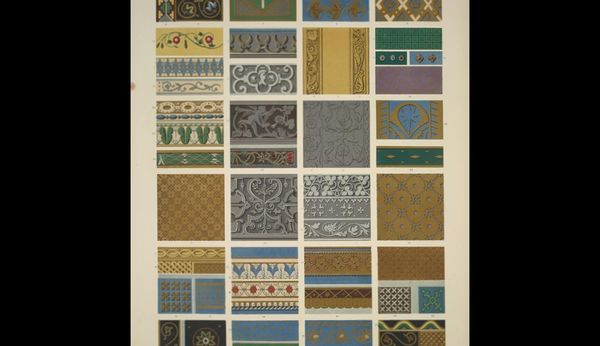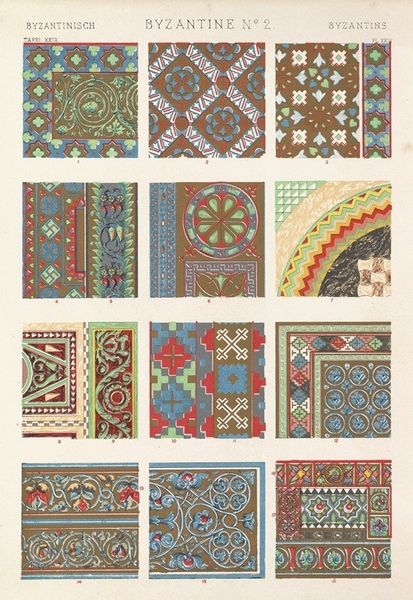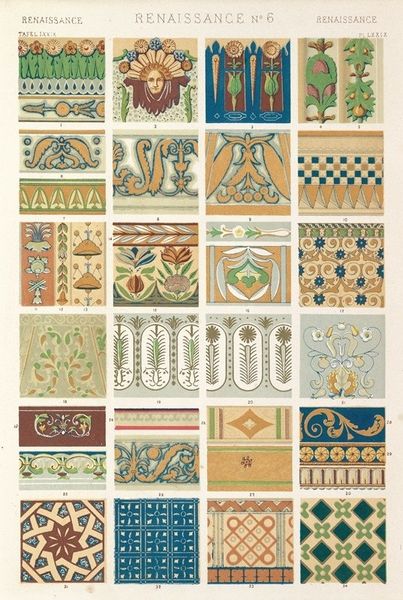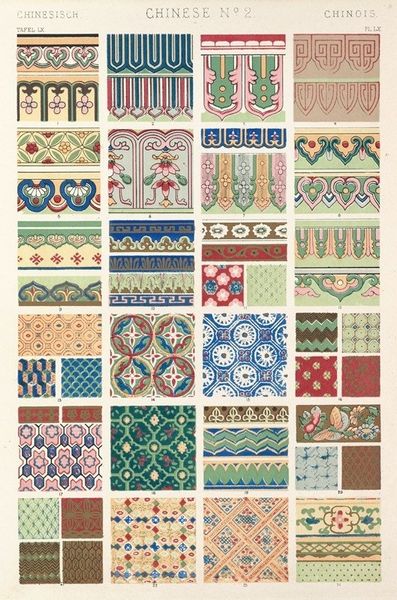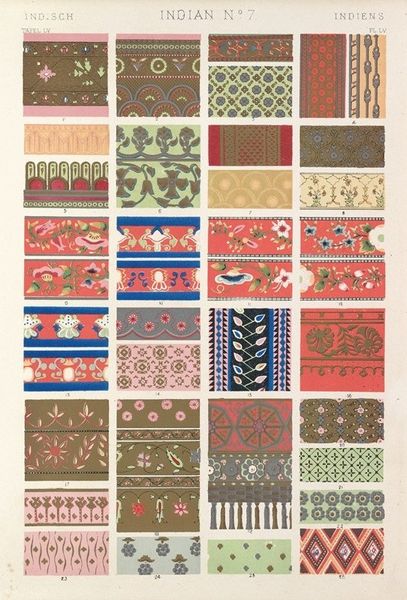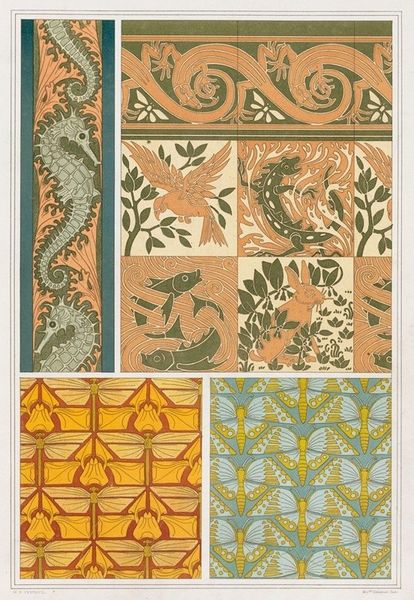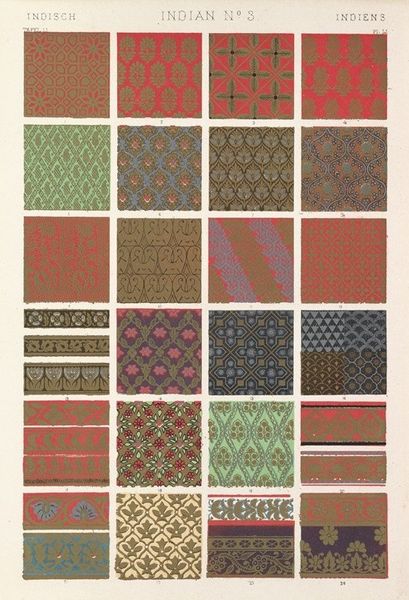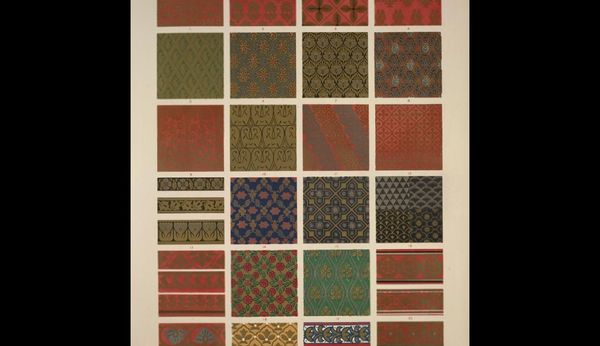
graphic-art, print
#
pattern heavy
#
graphic-art
# print
#
collage layering style
#
fashion and textile design
#
pattern design
#
fabric design
#
pattern repetition
#
textile design
#
decorative-art
#
imprinted textile
#
layered pattern
#
pattern work
Copyright: Public Domain: Artvee
Curator: Looking at "Renaissance No. 4" by Owen Jones, created in 1856, one immediately notices its comprehensive catalogue of patterns. What’s your initial take on it? Editor: Well, it’s overwhelmingly... decorative. Almost suffocatingly so. There's a real commitment to filling every space. I'm also struck by how meticulously each little tile appears to have been printed, like they wanted it mass produced. Curator: Precisely. Jones was a key figure in the 19th-century design reform movement, responding to industrialization and concerns about the quality of manufactured goods. These kinds of graphic works were intended as references for architects, decorators, and manufacturers. Editor: So, less about 'art' and more about function and dissemination? How were these images meant to shape people’s experiences? Were the new buildings incorporating such details? Curator: Absolutely. Jones was deeply invested in elevating the aesthetic standards of mass production, hoping to counter what he saw as the debasement of design. He studied historical ornament from various cultures to distil universal principles that could inform contemporary design. Think about how textiles and wallpapers shifted, with these accessible printed guides. Editor: So, there is something democratic about his pattern-forward design and that drive to teach about beauty... The accessibility allowed for consumption across socio-economic lines, for use as an architectural element or within clothing construction. How were those earlier styles, those earlier artisanal construction methods that the artwork samples, themselves received and distributed in society at large? Curator: He championed the idea of ‘fitness for purpose’ meaning that ornamentation should arise naturally from the material and function of an object, a concept promoted by thinkers like Pugin. Also Jones saw historical styles as guides and starting points, encouraging adaptation and innovation rather than direct copying. "Renaissance No. 4" offers a whole language of decorative options. Editor: It's easy to dismiss this as ‘mere’ pattern, but it highlights how the design process shapes society through the mass-produced object. It’s worth pausing to remember how profoundly such resources would have influenced taste and trends through manufacturing and architectural projects across global institutions and private properties. Curator: Exactly. Jones was deeply involved with exhibition design, including at the Crystal Palace, using those opportunities to shape public understanding and access to art, craft, and industry across different cultures. It's quite interesting to consider that legacy while analyzing Jones' portfolio.
Comments
No comments
Be the first to comment and join the conversation on the ultimate creative platform.
